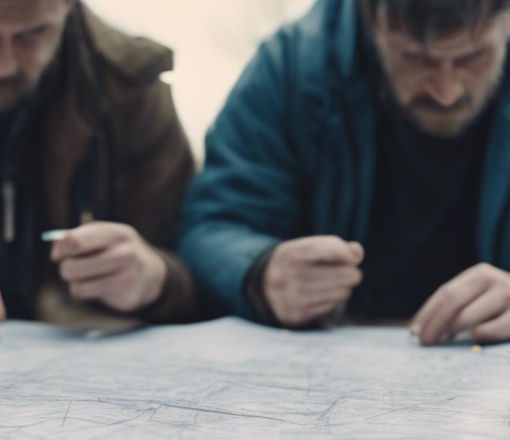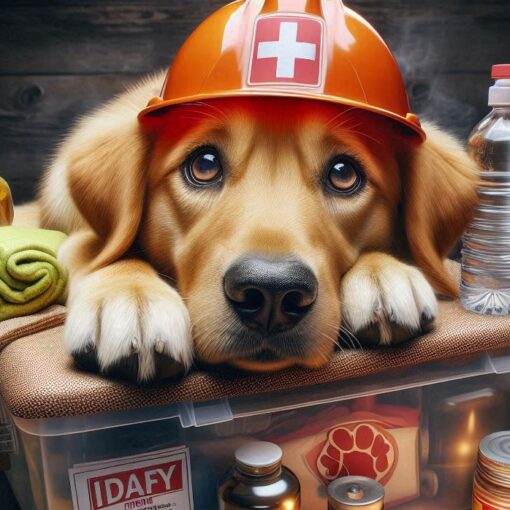 Let’s face it – life can be a bit like a rollercoaster ride designed by someone who just got their PhD in chaos. One minute you’re sipping coffee, and the next, your neighborhood is in the midst of a surprise natural disaster.
Let’s face it – life can be a bit like a rollercoaster ride designed by someone who just got their PhD in chaos. One minute you’re sipping coffee, and the next, your neighborhood is in the midst of a surprise natural disaster.
So how do you keep from becoming part of that “Oh no!” statistic? Spoiler alert – it involves more than just crossing your fingers and hoping for the best. It’s time to disaster-proof your life with some essential emergency prep tips that’ll have you ready for anything—except maybe a surprise visit from Aunt Edna.
Step 1 – Know Thy Risks
Before we dive into the nitty-gritty, let’s get real about what could happen. You wouldn’t wear flip-flops to a snowstorm, right? The first step in prepping is understanding what disasters are likely to strike your area.
– Natural Disasters – Are you living in hurricane territory or earthquake country? Knowing this can help tailor your emergency kit.
– Man-Made Disasters – Yep, those happen too! Think power outages or even civil unrest. What’s your plan when the Wi-Fi goes down?
Understanding these risks means you can prepare accordingly instead of waiting for disaster to knock on your door like an unwanted salesman.
Step 2 – Build Your Emergency Kit
 Alright, now that you’re aware of potential disasters lurking around every corner (cue ominous music), let’s talk supplies. An emergency kit isn’t just a backpack filled with granola bars and expired coupons—it should be a well-thought-out arsenal against chaos.
Alright, now that you’re aware of potential disasters lurking around every corner (cue ominous music), let’s talk supplies. An emergency kit isn’t just a backpack filled with granola bars and expired coupons—it should be a well-thought-out arsenal against chaos.
Here’s what you need –
– Water – At least one gallon per person per day for three days—because nothing says “I’m prepared” like staying hydrated while the world crumbles around you.
– Non-Perishable Food – Think canned goods, energy bars, and maybe even some comfort snacks (yes, chocolate counts). You might not be able to order pizza during an apocalypse!
– First Aid Supplies – Band-aids, antiseptics, and any personal medications. Remember that time you stubbed your toe? Yeah, don’t repeat that without proper care.
– Flashlight & Batteries – Because stumbling around in the dark looking for matches is only fun until it isn’t.
And don’t forget to check expiration dates periodically! Nothing screams “prepared” quite like finding out your food stash consists of ancient peanut butter.
Step 3 – Create an Emergency Plan
Now that you’ve got supplies lined up like little soldiers ready for battle, it’s time to strategize. You wouldn’t go into battle without a game plan—so why would you approach an emergency without one?
– Communication Plan – Decide how you’ll reach each other if cell towers go kaput. Maybe carrier pigeons are making a comeback? Just kidding—have backup phone numbers written down somewhere safe.
– Evacuation Routes – Know where you’re going if things get hairy at home. Having multiple routes planned out is key because Google Maps might decide it’s taking the day off when you need it most.
– Meeting Places – If family members get separated during an evacuation (think kids running off at Disneyland), designate spots where everyone knows to meet up again later—not at Grandma’s house unless she lives on high ground!
Step 4 – Stay Informed
Information is power—especially when Mother Nature decides she wants to throw a tantrum. Make sure you’re plugged into reliable sources for updates on emergencies.
– Weather Apps & Alerts – Download apps that provide real-time alerts based on your location so you’re never caught off guard while binge-watching cat videos.
– Local News Outlets – They’re not just there for weather reports; they often provide crucial information during disasters as well.
Staying informed allows you to react quickly rather than relying on hearsay or social media rumors—which can sometimes spread faster than wildfire!
Step 5 – Practice Makes Perfect
Finally, once you’ve done all this prepping and planning, it’s time to practice! I know; practicing sounds about as fun as watching paint dry—but hear me out.
– Drills – Conduct regular drills with family members so everyone knows what to do when panic sets in—or when Uncle Bob starts yelling about his missing TV remote during an earthquake drill.
– Review Plans Regularly – Every six months or so (or whenever there’s another season of reality TV worth discussing), revisit plans and kits to ensure everything’s still relevant—and stocked with edible goodies!
Preparing for disasters doesn’t have to feel overwhelming or daunting—it can actually be kind of fun! With these tips under your belt (and maybe some snacks stashed away), you’ll be well-equipped not just for surviving but thriving amidst life’s unexpected twists and turns. After all, being disaster-proof means living life fully—even if it comes with occasional interruptions from nature or wayward relatives!




